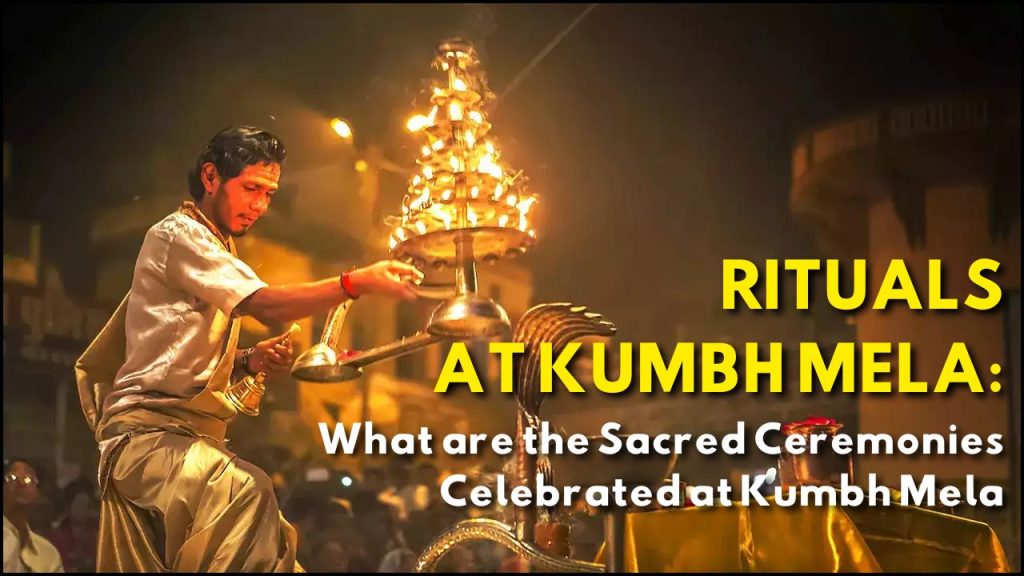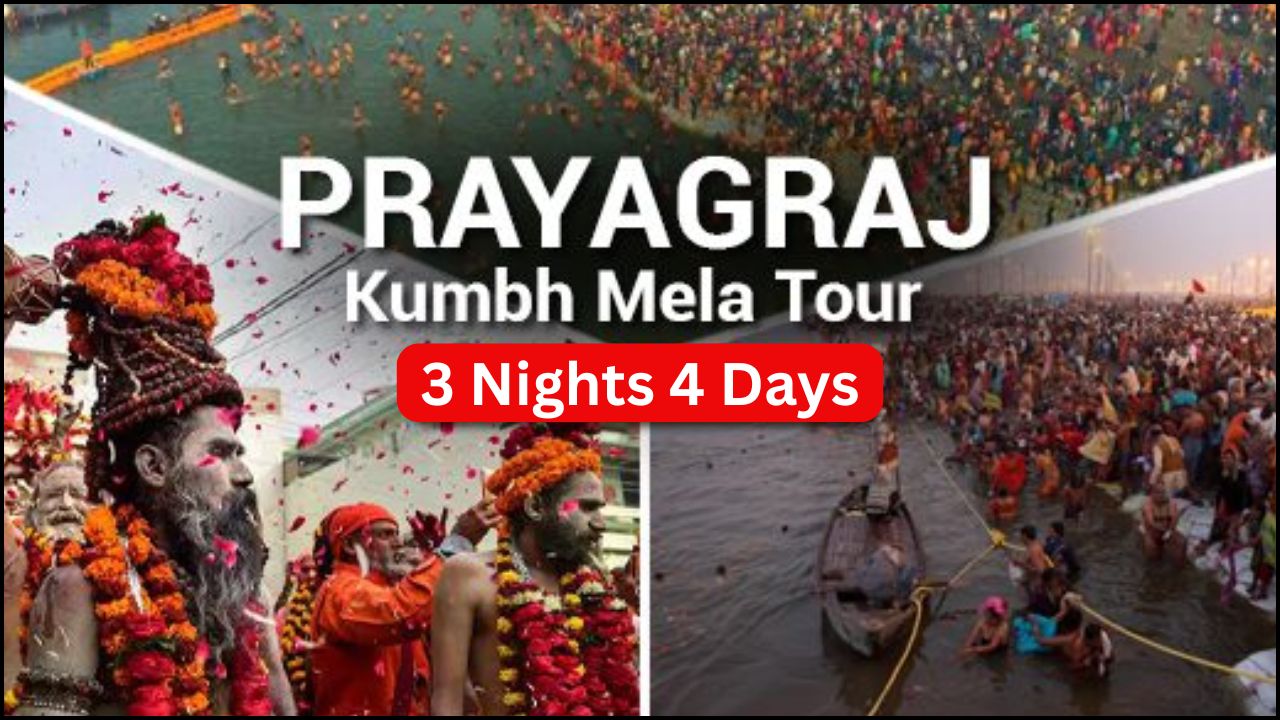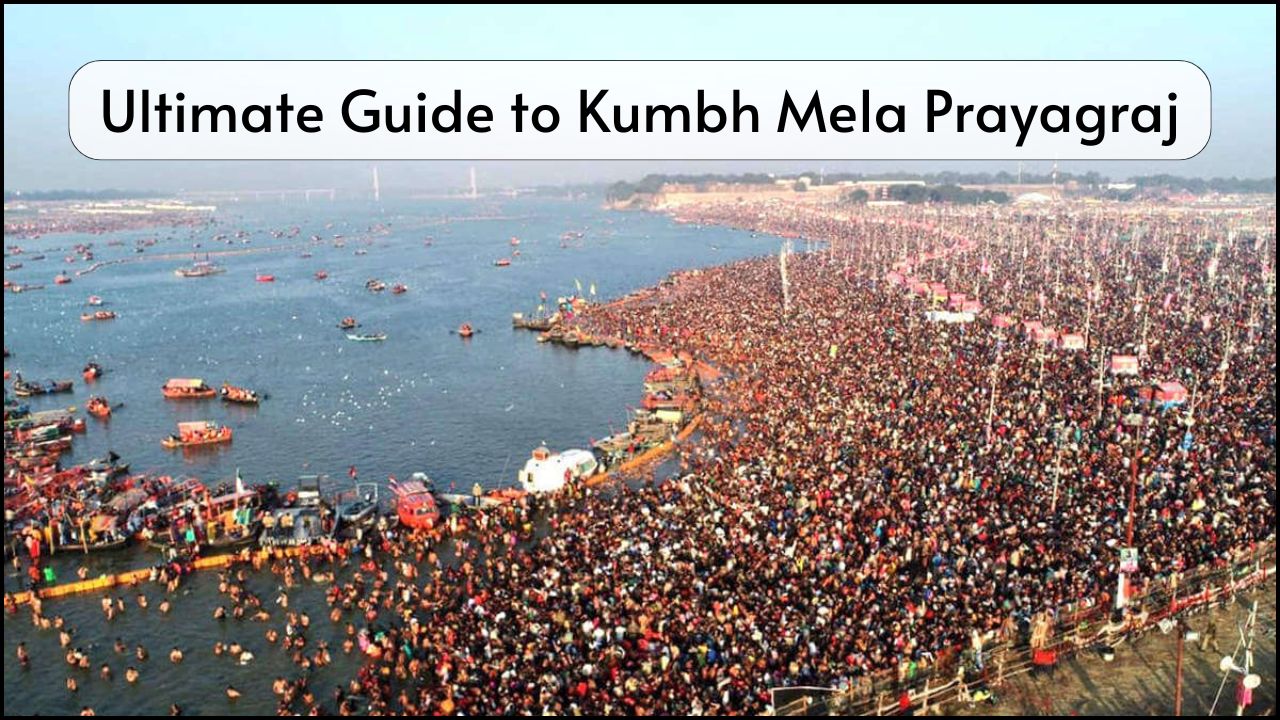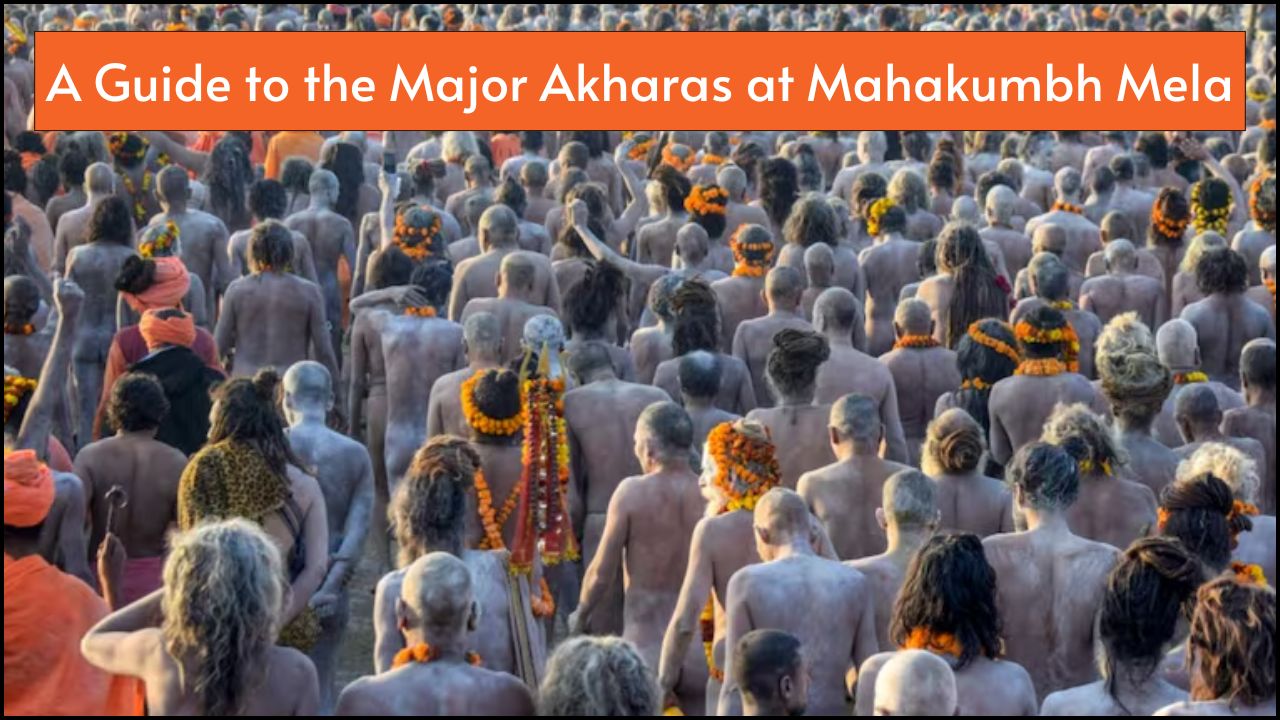
Kumbh Mela, the grandest spiritual gathering on Earth, stands as a living symbol of Indian heritage, devotion, and faith. Devotees, pilgrims, saints, and mystics from all corners of the globe gather for this sacred festival. Held every twelve years at the confluence of holy rivers, this occasion witnesses unique rituals passed down through generations.
These rituals carry deep symbolic meaning and reflect the timeless traditions of Hinduism. As Kumbh Mela 2025 in Prayagraj draws near, understanding the ceremonies celebrated at this celestial gathering offers insight into the soul of Indian culture.
Table of Contents
Major Rituals at Kumbh Mela
- Mundan Ceremony
- Meaning: A sacred head-shaving ritual.
- Purpose: Signifies shedding of ego and impurities.
- Who Performs: Usually infants or young children.
- Why at Kumbh Mela: The holy river confluence is considered the most auspicious location for this ceremony.
- Spiritual Belief: Removal of hair reduces vanity and strengthens spiritual growth.
- Family Tradition: Many families wait years for this moment to conduct the ritual with the blessings of the divine.
- Shahi Snan
- Meaning: Royal Bath – the most significant act at Kumbh Mela.
- Performed By: Thirteen Akharas (groups of saints and sadhus).
- Order of Ceremony:
- Procession with elephants, musical bands, flags, and devotional chants.
- Akharas take the first dip, followed by the general public.
- Spiritual Importance:
- Cleansing of sins.
- Liberation from the cycle of rebirth.
- Purification of the soul.
- Mythological Link: Yudhishthir, after the Mahabharata war, took this bath as suggested by a sage for redemption.
- Ganga Aarti
- Time of Performance: Every evening at dusk.
- Location: Banks of the sacred Ganga.
- Involvement: Devotees light lamps and incense sticks.
- Purpose: Offer gratitude to Goddess Ganga.
- Spiritual Symbolism:
- Illumination of the soul.
- Reverence for nature.
- Harmony between human and divine.
- Kalpavas
- Meaning: Spiritual retreat for a full month.
- Root Words: ‘Kalp’ (eternity) and ‘Vas’ (residence).
- Who Participates: Devout individuals and saints.
- Practices Involved:
- Taking vows of simplicity.
- Abstaining from worldly pleasures.
- Daily bath in the holy river before sunrise.
- Meditation, prayers, and charitable acts.
- Location: Near Triveni Sangam, where Ganga, Yamuna, and Saraswati meet.
- Goal: Achieve inner peace and spiritual upliftment.
- Akhara Processions
- Definition: Religious orders of monks and ascetics.
- Total Number: Thirteen major Akharas.
- Role in Kumbh Mela:
- Spiritual leadership.
- Custodians of sacred knowledge.
- Lead the Shahi Snan ritual.
- Spectacle: Colourful and disciplined marches with chants, traditional attire, and symbols of faith.
- Significance: Representation of various sects within Hinduism.
- Deep Daan
- Meaning: Offering of lamps to the river.
- Time: Usually after sunset.
- Items Used: Clay lamps (diyas), ghee, and cotton wicks.
- Ritual Act: Lamps floated on the river while chanting mantras.
- Symbolism:
- Victory of light over darkness.
- Expression of hope and gratitude.
- Celebration of spiritual awakening.
Summary: Rituals
| Ritual Name | Main Purpose | Performed By | Symbolic Meaning |
|---|---|---|---|
| Mundan Ceremony | Shaving of the head to remove ego and seek blessings | Children, families | Purification, tradition, and family bonding |
| Shahi Snan | Holy dip in a sacred river | Akharas and devotees | Liberation from sins, soul purification |
| Ganga Aarti | Evening prayer ritual with lamps | All devotees | Reverence, thankfulness, and spiritual connection |
| Kalpavas | Month-long spiritual stay near the river | Saints, devotees | Austerity, devotion, and detachment from worldly life |
| Akhara Procession | Ritualistic parade of religious orders | Monks, saints | Sect representation, religious discipline |
| Deep Daan | Floating lamps in river | All age groups | Hope, positivity, divine offering |
Unique Cultural Elements of Rituals
- Costumes and Symbols:
- Akhara saints wear saffron robes, carry tridents, and wear rudraksha beads.
- Women and men dress in traditional attire, often white or saffron, indicating purity.
- Chants and Hymns:
- Devotional songs, mantras, and Vedic chants echo throughout the mela grounds.
- Specific mantras are recited during rituals to invoke divine blessings.
- Sacred Offerings:
- Flowers, fruits, vermilion (sindoor), milk, and holy water are offered during various rituals.
- Diyas are decorated with marigold petals before being floated in the river.
- Community Engagement:
- Mass cooking and feeding (Bhandaras) are organized as part of religious service.
- Free medical aid, educational talks, and spiritual discourses are common.
- Astrological Significance:
- Each Kumbh Mela is aligned with the planetary positions that are believed to enhance the spiritual benefit of taking part in the rituals.
- Shahi Snan dates are decided according to specific astrological combinations.
- Spiritual Discourses (Satsangs):
- Renowned gurus, saints, and spiritual teachers deliver talks to inspire devotion and ethical living.
- These sessions attract listeners from across nations.
Why These Rituals Matter
- Cultural Identity: Every ceremony reflects India’s spiritual backbone and ancestral wisdom.
- Global Appeal: Devotees from multiple countries attend for blessings, cultural exposure, and inner peace.
- Emotional Fulfilment: Rituals offer a way to release guilt, find clarity, and embrace a divine connection.
- Community Bonding: People come together in faith, forming a unique collective energy of positivity and love.
Final Analysis
Rituals at Kumbh Mela are not just religious acts but sacred journeys that connect body, mind, and soul to a higher purpose. Each tradition carries a profound meaning, transforming the mundane into the divine. As Kumbh Mela 2025 nears, millions prepare to witness and participate in these time-honored ceremonies, once again proving that faith, when celebrated collectively, creates a spiritual revolution like no other.





